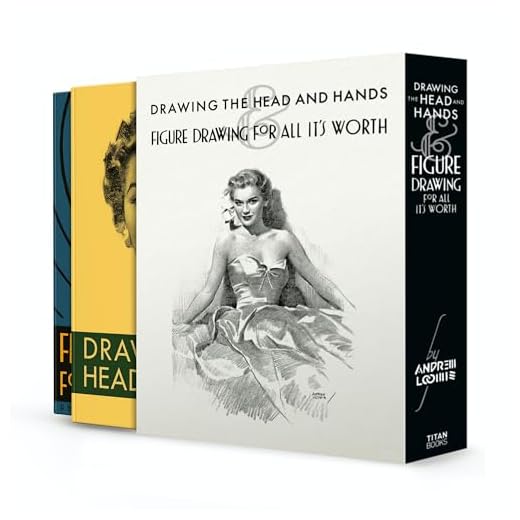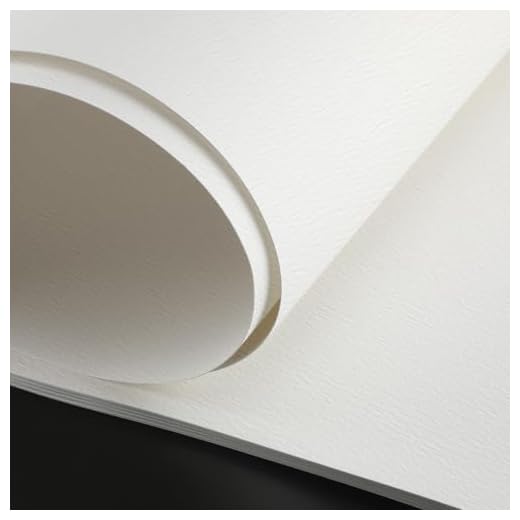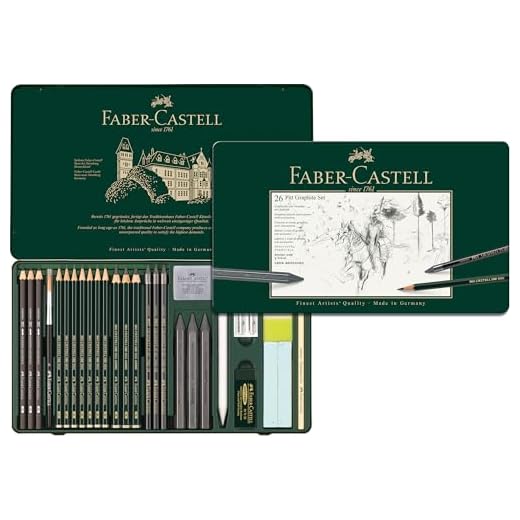



Begin with a light pencil sketch. Focus on the elongated body and a strong, athletic stance. Capture the distinctive head shape, slightly broader than a typical domestic feline, with rounded ears that sit high and a gentle curve at the snout.
Next, outline the mesmerizing coat patterns. Start with the rosettes, which resemble small, dark spots. Ensure they vary in size and are strategically placed across the torso and limbs. Don’t forget to incorporate the lighter underbelly, which adds depth to the overall appearance.
Shading plays a critical role in bringing your artwork to life. Use a combination of soft and dark tones to create a three-dimensional effect. Pay close attention to the areas around the eyes, which should convey both intelligence and grace. The eyes themselves should be wide and expressive, reflecting a sense of curiosity.
Finally, refine the details. Add whiskers, emphasize the texture of the fur, and bring out the vibrant gaze. By layering your techniques and focusing on the unique features of this magnificent creature, you’ll create an artwork that truly captures its essence.
Creating a Stunning Representation of a Spotty Feline
Begin with a light outline, sketching the basic shapes: a rounded head and a sturdy body. Use soft curves for the limbs, ensuring they reflect the muscular build of this remarkable creature. Pay attention to the distinct ear shape–rounded tips add character.
Next, focus on the facial features. Add large, expressive eyes, positioning them slightly wider apart to capture the wild essence. The nose should be small and rounded, while the mouth can hint at a subtle smirk, showcasing a playful demeanor.
For the fur pattern, incorporate various spots and rosettes. These should vary in size and shape, blending seamlessly into the coat. Use a combination of browns and golds to replicate the natural coloration; layering your colors will create depth and realism.
Once the body is detailed, refine the limbs. The paws are sturdy yet agile, so give them a balanced shape. Add claws peeking out to convey readiness. The tail should be long and thick, curving gracefully to demonstrate agility.
Incorporate shading to add dimension, focusing on areas where light would naturally hit and where shadows would fall. This will bring life to your artwork. Final touches can include whiskers and small details in the eyes, which will enhance the overall expression.
After finishing your masterpiece, it’s worth exploring the daily habits of these fascinating animals. If you’re curious about their grooming routines, check out this link: how do cats know when to clean themselves.
Choosing the Right Materials for Jaguar Cat Drawing
For capturing the essence of a wild feline, selecting the right tools is crucial. I recommend using high-quality sketching pencils, preferably a set ranging from 2H to 6B. This variety allows for fine details and rich shading.
Paper choice matters too. A heavyweight, textured drawing paper is best, as it can handle layering and erasing without tearing. Look for something around 200gsm for a sturdy feel.
Colored pencils or markers can bring life to the artwork. I prefer a set with a wide range of colors, especially earthy tones and shades of gold, to mimic the natural beauty of this majestic creature.
Don’t forget about blending tools. Blending stumps or cotton swabs work wonders for smooth transitions between colors and tones. They help create that soft, realistic look.
Finally, a good eraser is indispensable. Choose a kneaded eraser for precision, as it can be shaped to fit into tight spots and lift graphite or color without damaging the paper.
Step-by-Step Techniques for Capturing Jaguar Cat Features
I recommend starting with light pencil strokes to outline the overall shape. Focus on the broad head and muscular body. Pay attention to the proportions; the head is larger compared to the body, giving a powerful look.
Next, refine the facial structure. The eyes should be almond-shaped, and the whisker pads prominent. Capture the intense gaze by shading the area around the eyes lightly, ensuring they stand out. Don’t forget those distinctive, rounded ears, slightly tilting them for a more dynamic expression.
When detailing the fur, use short, swift strokes to mimic the texture. Start with the undercoat, layering darker strokes to represent shadows. This adds depth and realism, especially around the neck and legs where fur tends to be thicker.
Focus on the iconic spots next. Use an eraser to create a base pattern, then darken them with a pencil. Each spot should vary in shape and size, ensuring a natural appearance. Remember, they’re not perfectly symmetrical; randomness is key.
For the tail, create a thick base and taper it towards the tip. Add subtle stripes along its length, and blend those with the rest of the fur to maintain cohesion. Highlighting the underside can give it a more three-dimensional look.
Lastly, refine the background. A simple, natural setting can enhance the subject. Use lighter shades to suggest grass or foliage, ensuring the focus remains on the magnificent creature.
Begin with a light pencil sketch. Focus on the elongated body and a strong, athletic stance. Capture the distinctive head shape, slightly broader than a typical domestic feline, with rounded ears that sit high and a gentle curve at the snout.
Next, outline the mesmerizing coat patterns. Start with the rosettes, which resemble small, dark spots. Ensure they vary in size and are strategically placed across the torso and limbs. Don’t forget to incorporate the lighter underbelly, which adds depth to the overall appearance.
Shading plays a critical role in bringing your artwork to life. Use a combination of soft and dark tones to create a three-dimensional effect. Pay close attention to the areas around the eyes, which should convey both intelligence and grace. The eyes themselves should be wide and expressive, reflecting a sense of curiosity.
Finally, refine the details. Add whiskers, emphasize the texture of the fur, and bring out the vibrant gaze. By layering your techniques and focusing on the unique features of this magnificent creature, you’ll create an artwork that truly captures its essence.
Creating a Stunning Representation of a Spotty Feline
Begin with a light outline, sketching the basic shapes: a rounded head and a sturdy body. Use soft curves for the limbs, ensuring they reflect the muscular build of this remarkable creature. Pay attention to the distinct ear shape–rounded tips add character.
Next, focus on the facial features. Add large, expressive eyes, positioning them slightly wider apart to capture the wild essence. The nose should be small and rounded, while the mouth can hint at a subtle smirk, showcasing a playful demeanor.
For the fur pattern, incorporate various spots and rosettes. These should vary in size and shape, blending seamlessly into the coat. Use a combination of browns and golds to replicate the natural coloration; layering your colors will create depth and realism.
Once the body is detailed, refine the limbs. The paws are sturdy yet agile, so give them a balanced shape. Add claws peeking out to convey readiness. The tail should be long and thick, curving gracefully to demonstrate agility.
Incorporate shading to add dimension, focusing on areas where light would naturally hit and where shadows would fall. This will bring life to your artwork. Final touches can include whiskers and small details in the eyes, which will enhance the overall expression.
After finishing your masterpiece, it’s worth exploring the daily habits of these fascinating animals. If you’re curious about their grooming routines, check out this link: how do cats know when to clean themselves.
Choosing the Right Materials for Jaguar Cat Drawing
For capturing the essence of a wild feline, selecting the right tools is crucial. I recommend using high-quality sketching pencils, preferably a set ranging from 2H to 6B. This variety allows for fine details and rich shading.
Paper choice matters too. A heavyweight, textured drawing paper is best, as it can handle layering and erasing without tearing. Look for something around 200gsm for a sturdy feel.
Colored pencils or markers can bring life to the artwork. I prefer a set with a wide range of colors, especially earthy tones and shades of gold, to mimic the natural beauty of this majestic creature.
Don’t forget about blending tools. Blending stumps or cotton swabs work wonders for smooth transitions between colors and tones. They help create that soft, realistic look.
Finally, a good eraser is indispensable. Choose a kneaded eraser for precision, as it can be shaped to fit into tight spots and lift graphite or color without damaging the paper.
Step-by-Step Techniques for Capturing Jaguar Cat Features
I recommend starting with light pencil strokes to outline the overall shape. Focus on the broad head and muscular body. Pay attention to the proportions; the head is larger compared to the body, giving a powerful look.
Next, refine the facial structure. The eyes should be almond-shaped, and the whisker pads prominent. Capture the intense gaze by shading the area around the eyes lightly, ensuring they stand out. Don’t forget those distinctive, rounded ears, slightly tilting them for a more dynamic expression.
When detailing the fur, use short, swift strokes to mimic the texture. Start with the undercoat, layering darker strokes to represent shadows. This adds depth and realism, especially around the neck and legs where fur tends to be thicker.
Focus on the iconic spots next. Use an eraser to create a base pattern, then darken them with a pencil. Each spot should vary in shape and size, ensuring a natural appearance. Remember, they’re not perfectly symmetrical; randomness is key.
For the tail, create a thick base and taper it towards the tip. Add subtle stripes along its length, and blend those with the rest of the fur to maintain cohesion. Highlighting the underside can give it a more three-dimensional look.
Lastly, refine the background. A simple, natural setting can enhance the subject. Use lighter shades to suggest grass or foliage, ensuring the focus remains on the magnificent creature.
Begin with a light pencil sketch. Focus on the elongated body and a strong, athletic stance. Capture the distinctive head shape, slightly broader than a typical domestic feline, with rounded ears that sit high and a gentle curve at the snout.
Next, outline the mesmerizing coat patterns. Start with the rosettes, which resemble small, dark spots. Ensure they vary in size and are strategically placed across the torso and limbs. Don’t forget to incorporate the lighter underbelly, which adds depth to the overall appearance.
Shading plays a critical role in bringing your artwork to life. Use a combination of soft and dark tones to create a three-dimensional effect. Pay close attention to the areas around the eyes, which should convey both intelligence and grace. The eyes themselves should be wide and expressive, reflecting a sense of curiosity.
Finally, refine the details. Add whiskers, emphasize the texture of the fur, and bring out the vibrant gaze. By layering your techniques and focusing on the unique features of this magnificent creature, you’ll create an artwork that truly captures its essence.
Creating a Stunning Representation of a Spotty Feline
Begin with a light outline, sketching the basic shapes: a rounded head and a sturdy body. Use soft curves for the limbs, ensuring they reflect the muscular build of this remarkable creature. Pay attention to the distinct ear shape–rounded tips add character.
Next, focus on the facial features. Add large, expressive eyes, positioning them slightly wider apart to capture the wild essence. The nose should be small and rounded, while the mouth can hint at a subtle smirk, showcasing a playful demeanor.
For the fur pattern, incorporate various spots and rosettes. These should vary in size and shape, blending seamlessly into the coat. Use a combination of browns and golds to replicate the natural coloration; layering your colors will create depth and realism.
Once the body is detailed, refine the limbs. The paws are sturdy yet agile, so give them a balanced shape. Add claws peeking out to convey readiness. The tail should be long and thick, curving gracefully to demonstrate agility.
Incorporate shading to add dimension, focusing on areas where light would naturally hit and where shadows would fall. This will bring life to your artwork. Final touches can include whiskers and small details in the eyes, which will enhance the overall expression.
After finishing your masterpiece, it’s worth exploring the daily habits of these fascinating animals. If you’re curious about their grooming routines, check out this link: how do cats know when to clean themselves.
Choosing the Right Materials for Jaguar Cat Drawing
For capturing the essence of a wild feline, selecting the right tools is crucial. I recommend using high-quality sketching pencils, preferably a set ranging from 2H to 6B. This variety allows for fine details and rich shading.
Paper choice matters too. A heavyweight, textured drawing paper is best, as it can handle layering and erasing without tearing. Look for something around 200gsm for a sturdy feel.
Colored pencils or markers can bring life to the artwork. I prefer a set with a wide range of colors, especially earthy tones and shades of gold, to mimic the natural beauty of this majestic creature.
Don’t forget about blending tools. Blending stumps or cotton swabs work wonders for smooth transitions between colors and tones. They help create that soft, realistic look.
Finally, a good eraser is indispensable. Choose a kneaded eraser for precision, as it can be shaped to fit into tight spots and lift graphite or color without damaging the paper.
Step-by-Step Techniques for Capturing Jaguar Cat Features
I recommend starting with light pencil strokes to outline the overall shape. Focus on the broad head and muscular body. Pay attention to the proportions; the head is larger compared to the body, giving a powerful look.
Next, refine the facial structure. The eyes should be almond-shaped, and the whisker pads prominent. Capture the intense gaze by shading the area around the eyes lightly, ensuring they stand out. Don’t forget those distinctive, rounded ears, slightly tilting them for a more dynamic expression.
When detailing the fur, use short, swift strokes to mimic the texture. Start with the undercoat, layering darker strokes to represent shadows. This adds depth and realism, especially around the neck and legs where fur tends to be thicker.
Focus on the iconic spots next. Use an eraser to create a base pattern, then darken them with a pencil. Each spot should vary in shape and size, ensuring a natural appearance. Remember, they’re not perfectly symmetrical; randomness is key.
For the tail, create a thick base and taper it towards the tip. Add subtle stripes along its length, and blend those with the rest of the fur to maintain cohesion. Highlighting the underside can give it a more three-dimensional look.
Lastly, refine the background. A simple, natural setting can enhance the subject. Use lighter shades to suggest grass or foliage, ensuring the focus remains on the magnificent creature.









